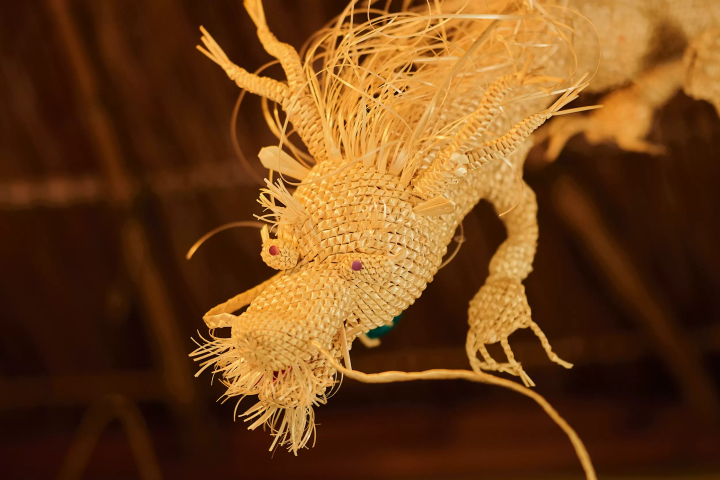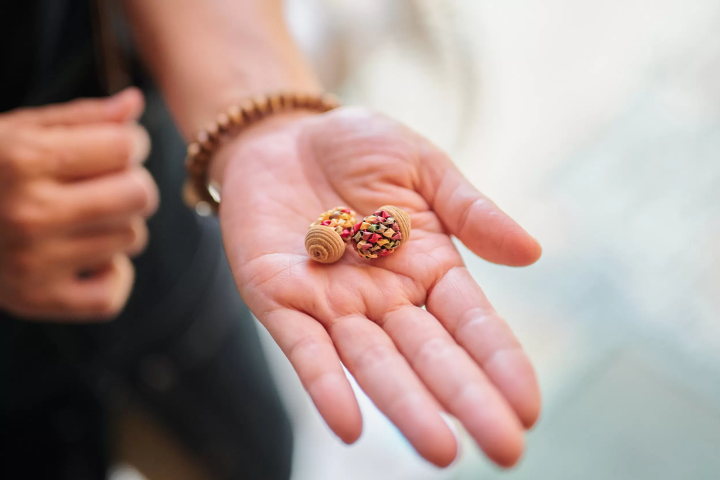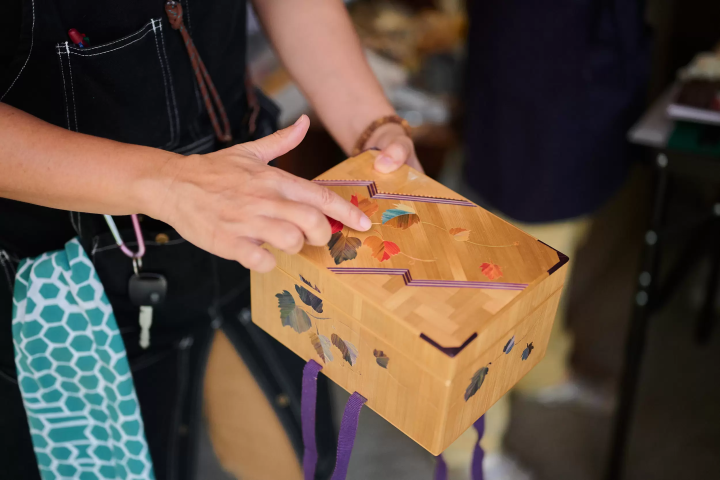[Shizuoka/Izu] "Izu Tabi PickUp! Report" ~ Straw craft making experience ~
![[Shizuoka/Izu] "Izu Tabi PickUp! Report" ~ Straw craft making experience ~](https://resources.matcha-jp.com/resize/720x2000/2024/10/31-207035.webp)
I write about the good things and things in Izu from a completely unique perspective. This time, I experienced straw crafts at "Mingei Mugiwara no Mise Ashita" in Shuzenji Onsen.
"Izu Tabi PickUp!" is a website where you can purchase experiences and local specialties from Izu City, Shizuoka Prefecture.
In the "Izu Tabi Pick Up! Report" we visit the places featured in "Izu Tabi Pick Up!" and write about what we feel and experience.
-
Table of Contents
- It's not an experience that you can have anytime, or that you can easily get.
- Learn traditional straw craft techniques from the second and third generation craftsmen.
- "Ami-zaiku" and "Hari-zaiku" teams
- Changes in ambition and challenging spirit and overseas reactions
It's not an experience that you can have anytime, or that you can easily get.

![[Shizuoka/Izu] "Izu Tabi PickUp! Report" ~ Straw craft making experience ~](https://resources.matcha-jp.com/resize/720x2000/2024/09/13-197291.webp)
What a convenient world we live in. You can get anything you want by simply placing your index finger on the rectangle in your palm. Not only can you get material things, but these days you can even get the feeling of having an experience. However, I want to say loud and clear that no matter how far you go, the feeling of having an experience is still just a "feeling of having an experience" and is not the same as an actual experience. Straw crafts are one of those things that I would like you to experience in real life and hold in your hands.

This time we visited Mingei Mugiwara no Mise Ashita, where you can experience making straw crafts, a traditional craft from the Edo period.
The workshop is located near the entrance to Shuzenji Onsen.

The origin of this interview was a staff meeting for this website (Izu Tabi PickUp!). I (Sato Aya), the writer of this article, experienced straw crafts 2 years ago, and wear the straw earrings I made there almost every day. These earrings, which I made with instruction and through hard work, are filled with a special love and are literally never taken off. By the way, I have been asked countless times when people saw my earrings, "Those earrings are amazing, Where did you buy them" Hehe. I answer that I made it.

The four staff members of this site who were participating in the meeting had not yet experienced the experience, and frankly speaking, they only saw straw crafts as "objects," and the experience was still within the realm of imagination. As the meeting progressed, they decided that this was a good opportunity, and three older men and one girl decided to go and experience it.
Learn traditional straw craft techniques from the second and third generation craftsmen.

Although there is a sign, it is difficult to tell at first glance that it is a workshop from the outside. However, once you stand at the entrance, you feel like you have entered the other side of the world! It is clear that this is a workshop. Breathtaking works and products are placed and hung, and colorful materials and props soaked in sweat are on the workbench. Looking around 360 degrees, you can't help but feel that this is where straw is brought to life.


By the way, this wheat straw is made from start to finish, from sowing the seeds to making the material. It is truly a valuable commodity. (It protects the wheat from the threat of deer, who come to eat the new wheat sprouts.) And he runs this workshop with his mother, the second generation, and his daughter, the third generation.
"Ami-zaiku" and "Hari-zaiku" teams


This time, the group split into two teams: the "Ami-zaiku Team" and the "Hari-zaiku Team." First up was the "Ami-zaiku Team." They weave wheat according to a set pattern to create wreaths and animal-shaped ornaments. Making a wreath starts with choosing a color. The men choosing straw that has been colorfully dyed with dyes, hunched over, are nothing short of adorable. (You can choose from one to four colors for the wreath. Now which one should I choose...)
![[Shizuoka/Izu] "Izu Tabi PickUp! Report" ~ Straw craft making experience ~](https://resources.matcha-jp.com/resize/720x2000/2024/09/13-197302.webp)

![[Shizuoka/Izu] "Izu Tabi PickUp! Report" ~ Straw craft making experience ~](https://resources.matcha-jp.com/resize/720x2000/2024/09/13-197304.webp)
The third generation owner, Mr. Tsuji, teaches you how to weave very carefully, so you can rest assured. The second generation owner's mother says that "Ami-zaiku" especially reveals your personality, saying, "Impatient people will knit without listening to the instructions and try to finish quickly, while meticulous people will knit while redoing the work many times." Indeed, these two men are making the same thing, but their relationship with straw is completely different. One is extremely fast, and the other is very careful. Either way, you can see that they are both very focused and immersed.
![[Shizuoka/Izu] "Izu Tabi PickUp! Report" ~ Straw craft making experience ~](https://resources.matcha-jp.com/resize/720x2000/2024/09/13-197305.webp)

Next up was the "Hari-zaiku Team." This time they were making bookmarks. First, they decided what they wanted to draw on the bookmark. Two of them decided to draw a four-leaf clover and fireworks, respectively.
This team is supported by Tsuji's mother, a second-generation farmer. After selecting the dyed straw, they press each one flat. This breaks the straw fibers, flattens out the unevenness, and gives it a unique luster. This process is repeated, and the resulting straw is pasted onto thin Japanese paper to create a straw sheet.
![[Shizuoka/Izu] "Izu Tabi PickUp! Report" ~ Straw craft making experience ~](https://resources.matcha-jp.com/resize/720x2000/2024/09/13-197307.webp)
![[Shizuoka/Izu] "Izu Tabi PickUp! Report" ~ Straw craft making experience ~](https://resources.matcha-jp.com/resize/720x2000/2024/09/13-197309.webp)

The man and woman here were silent the whole time, completely engrossed. I felt they were in a different world from the one I was watching from the outside. I sensed tenacity and a willingness to take on new challenges from the two of them. One of them was trying to be more original by putting his signature on a piece of paper craft, and the other was working on making lots of small parts to represent fireworks that light up the night sky. They applied glue to the backs of small materials and stuck them on, drawing their image onto a bookmark.
Changes in ambition and challenging spirit and overseas reactions


The two teams experienced the world of straw crafts in completely different ways. They worked while listening to the craftsmen's thoughts and the history that has continued since the Edo period. These stories blended with the colorful materials and many different processes, weaving and carving them into beautiful works. Everything they experienced in this space is something that definitely cannot be experienced with today's smartphones or computers. The four people found value through this experience.
![[Shizuoka/Izu] "Izu Tabi PickUp! Report" ~ Straw craft making experience ~](https://resources.matcha-jp.com/resize/720x2000/2024/09/13-197331.webp)

![[Shizuoka/Izu] "Izu Tabi PickUp! Report" ~ Straw craft making experience ~](https://resources.matcha-jp.com/resize/720x2000/2024/09/13-197333.webp)
The man who completed his straw craft said, "Next time I want to try something more difficult and I want to get better at it. I just focused on what was in front of me, so there was nothing but the present." He looked full of smiles and satisfaction. His ambition and desire to take on new challenges were vibrant in his eyes.

By the way, straw is used as a Christmas ornament overseas, and in Finland, himmeli is a famous and familiar item used as an interior accent in Scandinavia. In particular, works using the "Omori knitting" technique, which involves connecting diamond-shaped stitches, are a technique that only exists in Japan, and it seems that they would like to protect and pass it on to future generations.

According to the second-generation owner's mother, in the old days, the wheat harvest season was also the time when fireflies were flying on Japanese farms, so her grandparents taught her how to weave firefly cages, and children would temporarily put fireflies in the cages and play with them. You can also experience weaving such a firefly cage. So, which one will you try at Mingei Mugiwara no Mise Ashita.
📷Photo taken on August 7, 2024
Author of this article
The Izu City Inbound Promotion Project Team (commonly known as "IIP") is an organization established with the aim of promoting the attraction of foreign visitors tourists to Izu City and the development of a system for accepting them, with the aim of making Izu an attractive international tourist destination that makes use of Izu's tourism resources. Izu City is rich in nature and agriculture, and has a variety of tourist attractions, including hot springs, beaches, and mountainous areas. It is also easily accessible, about two hours by train from Tokyo, making it an ideal place for day trips or weekend getaways. [Notes regarding cover images] The cover image is a winning entry in a photo contest that colors Izu City. Photographer: Ojima Hiroki Title: "Coloring the Light Snow" Unauthorized use and duplication of the cover image is prohibited. For information on using the cover image, please check the Izu City Tourism Information Website.
The contents on this page may partially contain automatic translation.




























![[30 minutes by train from Meitetsu Tokoname Station!] A must-see for couples! Recommended date Feature Articles in Aichi Prefecture](https://resources.matcha-jp.com/resize/720x2000/2025/12/19-253428.webp)

